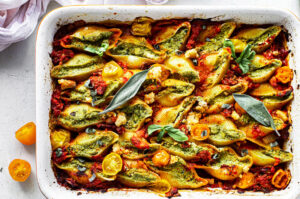
Article
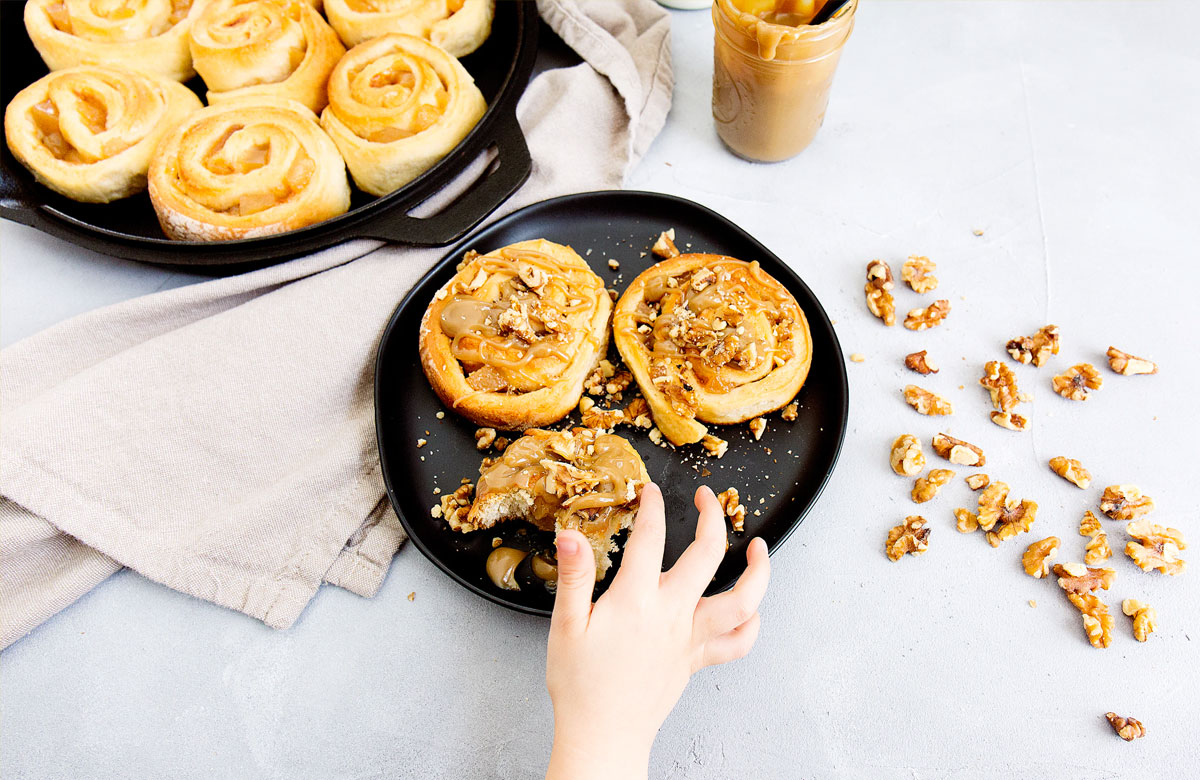

There’s a reason why milk, butter and eggs are the staples under every MasterChef bench! They can be found in nearly every baking recipe. But what happens when you want to switch it up with the plant-based alternatives?
Will your cakes still be moist and fluffy, your pastries crumbling perfectly, will your soufflés rise and brûlées have the magic balance of cream and crunch?
In one word: absolutely! Plant-based baking is a breeze once you know what to look out for! 🙂

Make it plant-based: Dairy milk is probably the easiest to supplement when it comes to plant-based baking. Supermarkets nowadays offer a wide variety of plant milk, which can actually improve the taste of whatever you’re baking: almond milk enhances the flavour of nut bread and cakes; coconut milk works exceptionally well in recipes that use tropical fruits; oat milk is perfect for oat cookies and making bread — the list is endless. Pick your favourite ones, and don’t be scared to mix and match!
Make it super-healthy: Sometimes, store-bought plant milk can contain varying amounts of additives; some are essential vitamins and minerals, such as B12 or calcium, but some also contain sugar or a lot of salt. If you prefer to be in charge, try making your own plant milk — all you need is a good blender and a muslin bag. If you don’t have one on hand, you can also use pantyhose or a fine mesh bag!
Make it plant-based: Another ingredient that’s relatively easy to exchange for its plant-based counterpart is butter. Margarine is widely available, and its flavour is pretty much indistinguishable from dairy butter. Most people already have a tub of margarine in their fridge, so there is not going to be a lot of searching involved. However, make sure to have a look at the ingredients as some margarine types still contain traces of dairy.
Make it healthier: If margarine isn’t your thing, there are plenty of other plant-based options out there. While margarine is made with vegetable oil, other spreads have an avocado, coconut, or olive oil base. Alternatively, you can use coconut oil on its own for more sweetness — but be careful with your measurements as coconut oil liquefies at warmer room temperatures.
A refined note: When it comes to coconut oil, there are ‘refined’ and ‘unrefined’ options. Unrefined has a strong coconut flavour, while refined is more subtle. I use both for different purposes, for example, unrefined coconut oil works a treat in these Cherry Ripe-esque truffles, whereas in old-fashioned apple pie I’d prefer the flavour of the fruit to sing — so I use refined coconut oil. The choice is yours 🙂
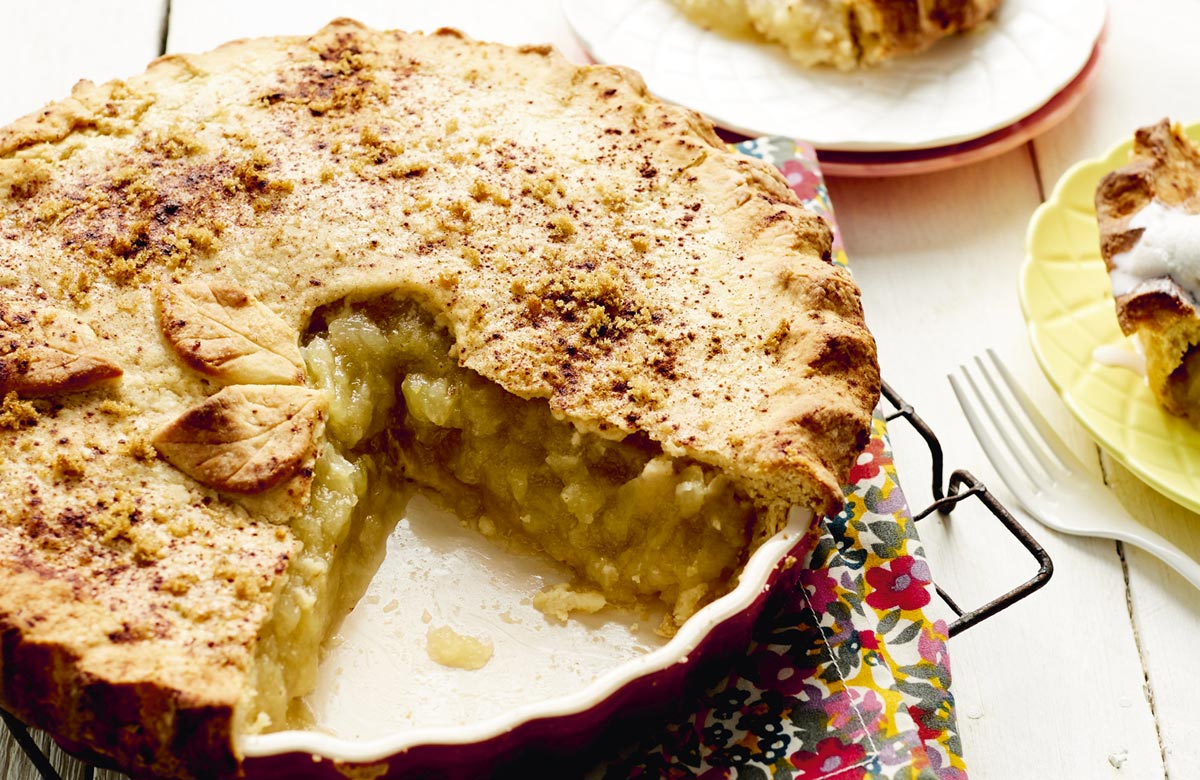
Make it plant-based: When it comes to eggs, it can seem a bit difficult at first to find a suitable alternative. When I baked my first egg-free cake, I was confused about what I should use to create structure and hold everything together. After all, we grew up thinking that eggs are just naturally one of the main ingredients in every cake, tart, and muffin, right? Well, I soon found out that’s not the case! It’s not about eggs at all, but about using something that binds and adds moisture. Luckily, egg replacement products are no longer a rarity that you have to look for online, they’re widely available in most supermarkets (search ‘eggs‘ in our shopping guide).
Make it healthier: If you’re after a healthier version, or if you want to use what you already have in your kitchen, there is a variety of ingredients to replace eggs in your baking adventures. Ripe bananas are perfect for this as you only need around one medium-sized mashed banana to replace one egg — the riper, the better. It also acts as a natural sweetener, so you don’t have to use as much sugar (perfect for a healthier banana bread!).
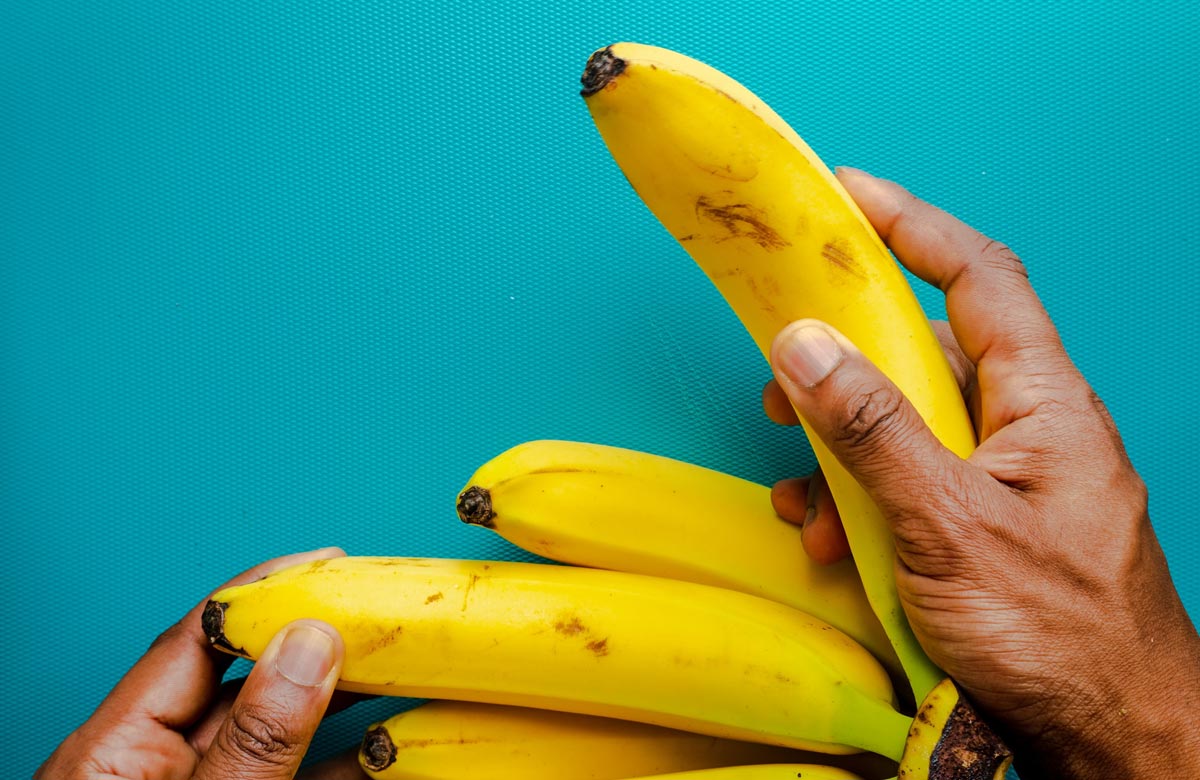
Chia or flax seeds are another fantastic egg replacer, especially when you need to bind a lot of ingredients together. Simply soak them in water (ratio around 1 tablespoon of flax/chia to 3 tablespoons of water for one egg) for around 20 minutes. Last but certainly not least: tinned chickpeas can be found in many home pantries, but did you know that you can actually use the canned liquid, called aquafaba, as well? Simply blend until it resembles egg white, or keep blending if you’re after a whipped cream consistency.
Here are some more easy swaps (you can print this handy guide out to keep in your pantry!)
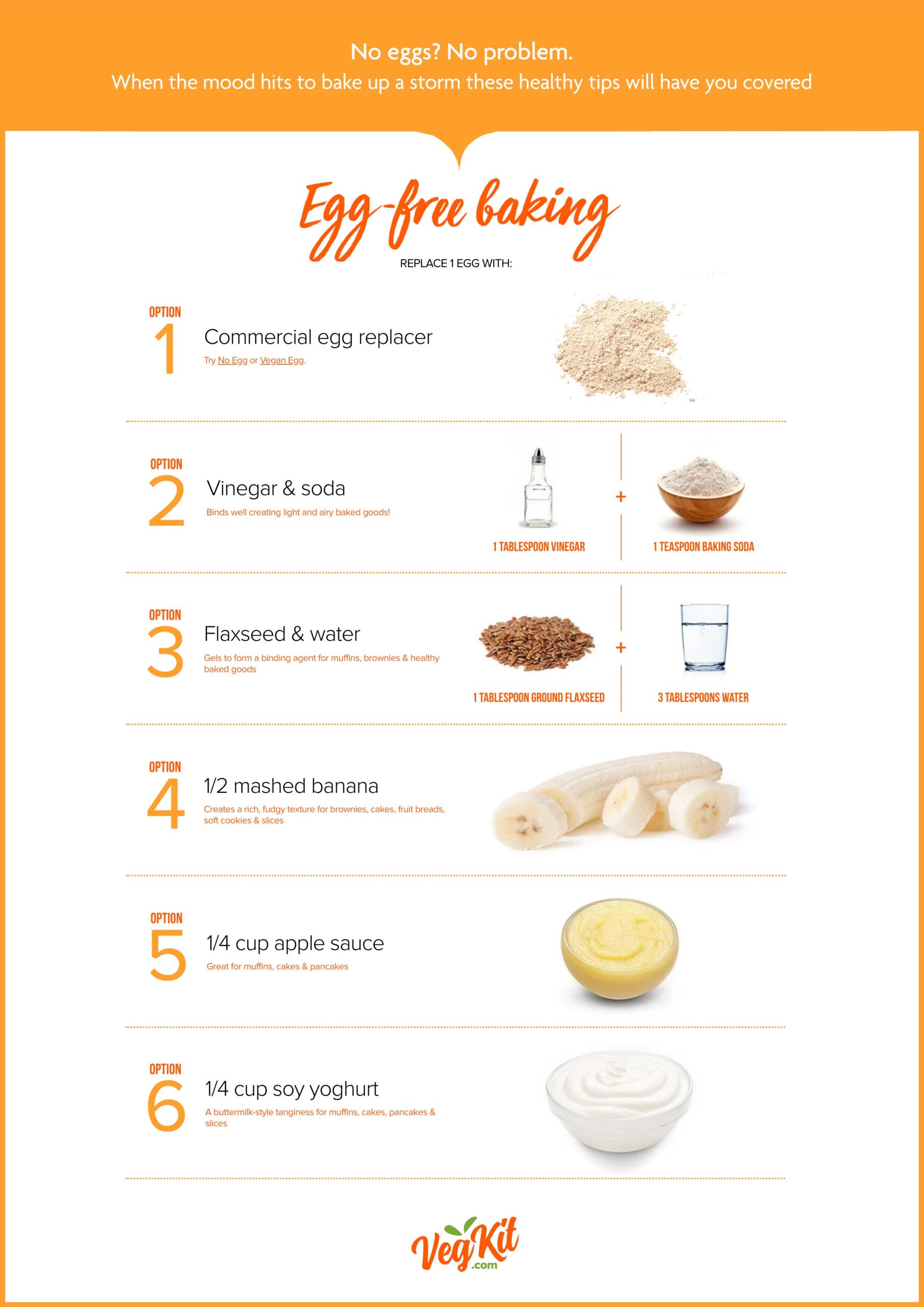
As you can see, there’s an abundance of alternatives for every single ingredient that we always thought were essential to baking. In fact, I have found that I have become much more adventurous with my baking since I embraced a plant-based diet. There are so many fun and delicious recipes out there, it makes me want to bake all the time — and that’s what it’s all about, isn’t it? ![]()

Lisa’s love of food is only trounced by her love of animals. So when she announced she’d gone veg, her Hungarian grandmother exclaimed with exasperation, ‘oh Lisa, I knew this day would come’ … before promptly frying up a plate of cauliflower schnitzels. It turns out – from Goulash to Paprikás to the family’s favourite Hungarian sweet treats – plants really can be the centrepiece of any meal!